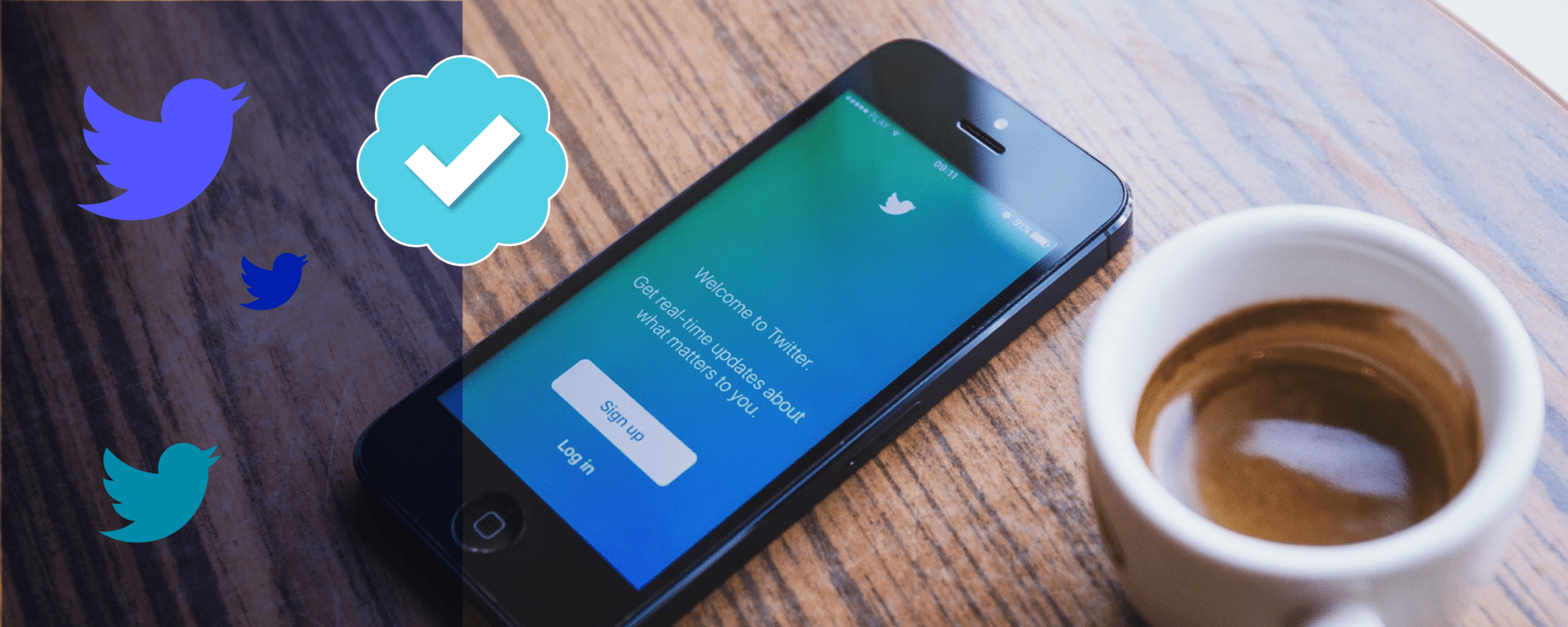
Everyday Marketing: How To Verify Your B2B Business On Twitter
(And yes, it's totally worth doing)
Last summer, we received a DM on Twitter from a resourceful intern at a fellow SaaS company. In hopes to impress his manager, he was looking for information on how to get his company’s Twitter account verified and was hoping we could share some tips. By now, I’m sure you know that verified Twitter accounts are the ones with a blue checkmark badge by the @ handle.
You’ve likely seen the blue badge next to handles of big brands like Yahoo and celebs like Shakira. So when it comes to your B2B business, does Twitter verification really matter?
In short, YES! Twitter verification matters
Twitter verification can do a few notable things for your B2B brand.
- Build trust and authority: These days, you can’t just sell a product or service. You have to be a thought-leader in your space. When your audience sees the bright blue badge, they’re more likely to trust the content you post (and share it with their audience!).
- Add layers of security: In order to apply for verification, you have to supply a phone number (also good for two-factor authentication), valid email address etc. Additional security is never a bad idea. It helps to avoid things like identity theft and validating your account as the ‘real’ brand account in case someone else creates one with a very similar handle.
- Help you get verified on other social accounts: Want to maintain and build your authority across all social accounts? Already being verified on one channel gives you a leg up when you go to apply for others.
- Give you a leg up for influencer marketing: If you’re going to be reaching out to established forces in your space, odds are, you’ll look for the blue checkmark. Well, so will they.
Biggest myths about Twitter verification
Before getting to the ‘How To’ part of this post, I’d like to debunk a few common myths that typically deter organizations from getting Twitter verified.
Myth #1: You need X amount of followers
If you are a legitimate B2B business with a growing following and regular (appropriate) posts, it doesn’t matter if you have 100 or 100,000 followers. You can (and should) apply to get verified.
Myth #2: You need to know someone at Twitter
You don’t need an “in” at Twitter or even a dedicated account manager to apply. Back in 2016, Twitter created an online application process to allow brands and public figures to apply for verification. Prior to that, only Twitter had the power to bestow the coveted blue badge and only 200,000 lucky accounts had one.
Myth #3: You need to have ad spend
The only reason ad spend would help in the verification process is that you’d be able to work with an account manager; however, if you can make a strong case in the application process, ad spend won’t necessarily make a difference.
Now that I’ve addressed some initial concerns, here are my most helpful tips to make the application process a success.
Ok, I’m convinced. How can I get verified?
The first thing they’ll ask for is a few links to help verify your brand. The minimum is two, but I suggest sending the maximum of five to help your credibility.
Some types of links to consider include:
- Funding announcements
- Press releases like high-profile hires and board members
- Customer case studies, preferably hosted externally
- Third-party articles, such as media coverage
The second thing they’ll ask for is a 500 character explanation on why you believe your brand should be verified. Make sure to include the basics like your start date, founders, what city you have offices in, what your company does, and any high-profile customers you serve. You also need to add a compelling reason why you should be verified. It might be name confusion or lack of discoverability, for example. If you spend any money on Twitter ads, be sure to mention that too! This is quite a bit to fit into 500 characters, so I suggest you type it all out and then edit it down from there.
What happens if your request for verification is denied?
The harsh truth is this: filling out an application is no guarantee you’ll be accepted. If at first you don’t succeed… well, you know how it goes.
If your application is rejected, it could be the result of a few things:
- Your Twitter profile isn’t optimized: Banner and profile images should be the optimal resolution and an appropriate bio that includes your company website.
- You’re not using Twitter enough: If your usage doesn’t cut it, start using it more! And I don’t mean just post more. Interact with your followers more. Retweet relevant content more. And post more of your own original content.
- You fell short on authoritative links: If you weren’t able to send the 5 links mentioned above, perhaps you can take some time to put some PR power into your brand. Then, once you’ve generated some good buzz, you can apply for verification again.
If you put some work in to correct all of the above, you will naturally also grow your following. If Twitter can see your brand is active and growing, you’ll be much more likely to get verified the next time you apply.
So, as you can see, that eager intern was really onto something. So much so I decided to turn my answer to his question into an entire blog post. If you have any more questions regarding Twitter verification and your B2B business, feel free to leave a comment below… or DM us on our Twitter account!
Update: Twitter has temporarily paused it’s application process after some issues late last year. We will update this article as soon as it becomes available again!
